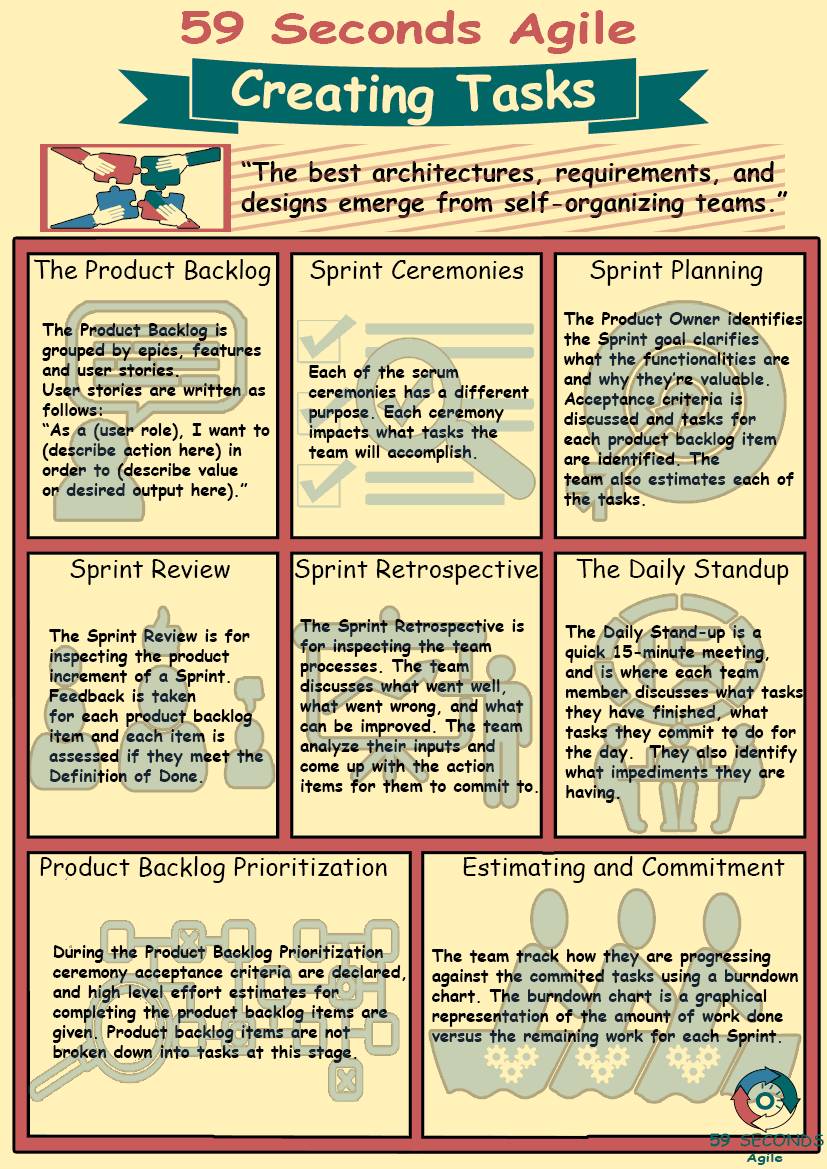This article looks to discuss ‘Scrum To Do List and Agile Projects’. It provides an introduction to the Agile Tasks and discusses Task Estimation and Estimation Techniques.
Agile User Stories and Tasks
A 59 Seconds Agile Training Video
Scrum To Do List and Agile Projects – Part 2
A 59 Seconds Agile Article
Scrum To Do List: Creating Tasks from User Stories
Once user stories have been broken down and clarified, the team can proceed with task creation. The developers have the expertise to know what are the best ways to build and test, so the Product Owner can trust the team in coming up with the tasks needed to complete the user stories. The Product Owner can help verify if the development team understood the requirements well and clarify anything if needed.

Scrum To Do List: Task Estimation
Because Agile estimation takes work and effort, it’s important for everyone in the team to discuss the tasks needed for user stories. The different roles in the team give different insights on how a feature can be developed – QA engineers can derive from their testing experience, designers can give their point of view, and developers can give technical inputs. Knowing what to do for each user story helps the team understand the effort it would take to develop it, thus allowing teams to give better estimates. This also helps the Product Owner prioritize user stories better within the Product Backlog and Sprint Backlog.

Scrum To Do List: Estimation Techniques
It’s up to the scrum team how they’re going to estimate the work they need to do. Some teams estimate using time formats, such as hours, days, or weeks. Another way to estimate is by using story points, which score the relative effort needed to finish the work with a Fibonacci-like sequence (1, 2, 3, 5, 8, 13, 21, etc.). Typically, teams would take a user story, have a short discussion about it, then individually and mentally form estimates.
Our Favourite Agile Books
We found these books great for finding out more information on Agile Scrum:
When ready, all members would hold up the cards with their estimates written on them, so that they can all see each other’s estimates at the same time. If needed, they will re-discuss and re-estimate. This approach is called planning poker, and it is a popular approach for story point estimation, as it gives opportunities for teams to collaborate and talk about user stories and tasks.
Scrum To Do List and The Product Owner
The Product Owner is there to motivate and support the scrum team, by ensuring that the Product Vision, the Sprint Goal, and the feature requirements are understood by everyone. The Product Owner is helping them do what they need to do to deliver great software on time.
Prev <— Continue Reading —> Next
The Agile User Stories and Tasks
A 59 Seconds Agile Video Animation
Prev <— Continue Reading —> Next
User Stories Applied
A 59 Seconds Agile Book Review
User Stories Applied by Mike Cohn is one of our favourite books on Agile User Stories. The book starts with an overview into user stories, and details what a user story is and the different aspects of them. He then discusses how to go about writing a user story, and provides details of the INVEST criteria that can be used to determine if the story is meeting all of its objectives. Next Mike gives an in depth discussion of who user stories are written for and where to begin when gathering the details for them. The book then discusses acceptance testing user stories, including how to go about specifying these criteria and the responsibilities of the development team and customers during this process.
Prev <— Continue Reading —> Next
The Agile Frameworks
A 59 Seconds Agile Infographic


